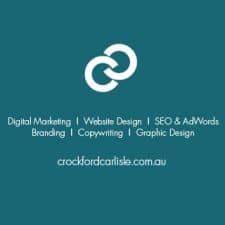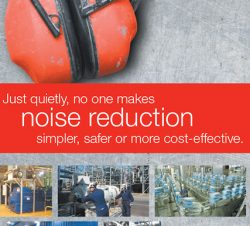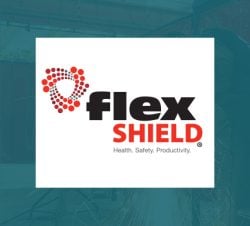3 insider tips for using Marketing Automation to improve your business
If you’re wondering how to increase your bottom line profit, a good place to start is to reduce your cost-per-sale. And one of the first places to start impacting that is to reduce your cost per lead.
I thought I’d share some ‘behind the scenes’ insights about our approach to reducing the cost of leads. Some of these ideas might be handy for you, as you work with your own marketing agency to improve the ROI from your digital marketing.
 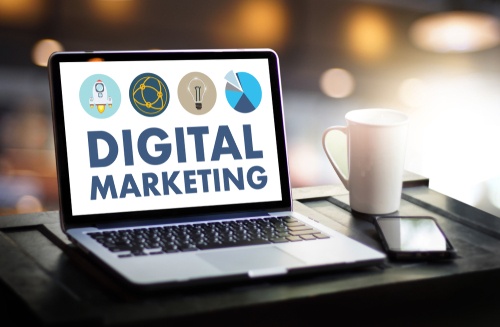
Calculating the average cost of your sales leads isn’t too difficult. We do it all the time for our clients as we work to drive the cost per lead down for them.
In simple terms, you:
- Take the total outlay spent on marketing, and
- Divide it by the number of leads you get from this each month.
For example:
If you spend, say, $7,000 a month on marketing to produce 100 leads, then your average cost per lead is $70. Every business is different, and depending on what you are selling, your margin and whatever else, that $70 might be good (if say, you’re selling houses). It might be bad (if you’re selling hamburgers!).
Where it starts to get tricky though, is when you try and figure out your cost per QUALIFIED lead.
For example, if you have that same $7,000/month pipeline producing 100 leads in total, 30 of which are qualified, then your cost-per-qualified lead is $233. ($7,000 / 30 = $233).
Again, we can’t say here whether that’s good, bad or indifferent.
What we CAN look at however, is what you can do to make that same funnel more efficient, so that MORE of those same 100 leads are qualified. The bigger that number of qualified leads, the lower the cost for each one, and the happier you will be.
To bring on more of that happiness, in this article we’re going to dig into three issues that will help you to make your sales team more efficient.
They are:
- How do you DEFINE a Qualified Lead?
- How do you FIND them in the dross?
- How do you wring MORE qualified leads from your website?
Here’s how we approach it.
1. How do you define a Qualified Lead?
There are no hard and fast rules, as every business has a different definition of what makes a Qualified Lead for them.
To make it even more complex, some businesses may offer a range of services, and therefore have a few different types of Qualified Lead. That is, a person who is a qualified lead for service A may be different from a person who is a qualified lead for service B.
But let’s leave that out of this discussion and keep it simple so our heads don’t explode.
In simple terms, a “Qualified Lead” is the type of lead that your sales team really wants to talk to, because they tick all the boxes and are likely to buy.

So, what are the boxes that need to be ticked?
Let’s use a home builder as an example…
Imagine a home builder who builds upmarket custom homes. He offers some pre-drawn “off-the-shelf” plans, but mostly these tend to be a ‘starting point’ for people to get ideas, as they begin their journey to their beautiful custom build.
His homes aren’t cheap, and his buyers tend to be in more affluent areas. In some cases, they are inner-city ‘knock down & rebuild’ projects, where a good block of land is worth investing in.
(Clearly, your business will have different products/services and different market. But working through this will give you a structure to figure all this out for your own situation.)
As our example business focusses on high-end homes, he clearly doesn’t want to talk to first home buyers with a tight budget. So that’s an obvious start.
But what else do we need to think about when defining a qualified lead for our builder? What else will make their sales team’s hearts pound with unbridled joy?
Ahhh…
Right here, we are on to something.
You are reading an article from a ‘marketing guy’. Yet here I am talking about the sales team and what they want in their inboxes.
Which brings us to…
A quick word about why Marketing and Sales must work together on lead qualification
Setting up your criteria for qualified leads is really important. It will shape your whole Inbound Marketing campaign.
To make sure we get a solid understanding when working with our clients, we like to workshop the criteria for a qualified lead with their entire sales team. And you should do this too with your marketing agency.
I can’t tell you the number of times that some absolute gems of insights have come up from these discussions. After all, your sales team are talking to potential customers all day long. So they know:
- How they tick,
- What they want, and importantly,
- What qualifies a person as a good lead who is worth talking to.
So yes, their insights are invaluable.
And besides, having your sales team involved helps them to understand the bigger picture of your Inbound Marketing strategy — which in turn means they can assist in other ways when developing your nurturing process
Furthermore, as your Inbound campaign matures and more leads come in to your CRM, the sales team will understand what is/isn’t possible with lead qualification, and can make suggestions to adjust the initial criteria that were set.
In our experience, engaging your sales team together with your marketing team in this stuff pays dividends!

So, back to our example…
Here’s a list of what the builder’s sales team might like to know about a potential client before they invest their valuable time in talking to them on the phone, or for that matter, with a personal meeting.
For them, a Qualified Lead might be:
MUST KNOW
- Location — Brisbane or Gold Coast
- Timeframe — Are they “dreaming for the future”? Or are they ready to build now?
- Land — Do they have a block yet? Or do they need help looking?
- Type — Is it a vacant block? Or a knock down and rebuild?
- Do they have plans already? Or do they need to talk to our designer?
NICE TO KNOW
- Plans — Which plans they have looked at on the site?
- Budget – How much are they planning to spend on building their home?
- Are there any local council provisions which apply to the block?
There would be more criteria of course, (Do they require landscaping? Are they a pain in the backside to deal with? Do they have a rich uncle who has just gifted them a million dollars to buy a mega-home?), but some of those can’t be easily determined until the sales team have a conversation with them.
But for now, we have a good start.
I think you’d agree, if you had a clear picture like this of what a qualified lead is for your business – so that your marketing team knew who to attract to your website and who to deliver to your sales team – life would be all the sweeter!
So that’s the first step. We now have to make it easy for your sales team to identify them in your CRM.
2. How do you find Qualified Leads amongst the dross?
This is where we start to use HubSpot’s powerful marketing automation — or rather, one particular aspect of the many (many!) things it does.
I’m talking about a particular feature called “progressive profiling”. It’s a very powerful tool for finding the qualified leads our clients need.
Here’s a quick look at how we use it.
If you look at the “must know” list in our qualified lead criteria, you’ll see that there are quite a few questions there.
So how do we get people to answer them all?
If a potential customer is well progressed in their Buyer’s Journey and is ready to talk to a builder, they might do it all in one go, by filling out one form.
But most won’t.
Therefore, the trick is to ask potential leads for just one or two pieces of information at a time. That’s where we use progressive profiling to get the job done.
Here’s how it works.
The majority of people visiting our imaginary builder’s website are earlier in the Buyer’s Journey. They are still thinking about a new home… mulling it over… looking for ideas… wondering about the best way to move forward.
It’s the same for your business, right?
Sure, some people will be ready to talk to a salesperson. But the majority of that monthly traffic figure you see in your Analytics are not there yet.
HOWEVER…
Many of those people will be willing to answer one or two questions on a website form, in exchange for some helpful information from you that will answer some of their questions or solve some of their problems.

This is where your carefully crafted eBooks, Guides, How To’s, Calculators and Explainers come into the picture.
We’ll talk more about them in the next section (3. How do you wring MORE qualified leads from your website?), but for now let’s look at the role they play in progressive profiling.
We use HubSpot’s ability to remember each visitor’s PREVIOUS website interactions, and add that data to their NEXT website interaction.
This, let me tell you, is very cool.
In our example of generating leads for a home builder, the first time Freddy Fudpucker visits the site and downloads the “Free 7 Point Home Design Guide”, the form on the landing page will ask him whether he is dreaming for the future, or getting ready to build.
In a day, or a week, or a month, or a year’s time, when he comes back to get the “9 Beautiful Home Ideas” eBook, the form won’t ask him that question again – because it identifies Freddy and remembers what he told us previously.
Instead, the form will ask him the NEXT question, which might be whether he has a block of land, or is still looking.
Do you see how this works?
Thanks to our clever progressive profiling questions, we are automatically building a profile of Freddy in the CRM. The sales team can see at a glance that he:
- Is ready to build in the next six months
- Has a block of land
- Has a preference for sloping block home designs
- And so forth
Pretty nifty hey?
And of course, once Freddy meets all the criteria to be deemed a Qualified Lead, we set up an automatic email notification to the sales team so they can follow it up.
You can just imagine the impact of this. We can’t understate the power of progressive profiling, and the HOURS of wasted time it eliminates for a sales team.
And speaking of hours of time saved…
3. How do you wring MORE qualified leads from your website?
Right now, you’ll have:
- XXX visitors a month to your website
- Producing YYY number of qualified leads.
You might think that to get more leads, you need more traffic, and so the natural tendency is to sink money into SEO to improve things.
But there is a smarter way. That is to improve the overall EFFICIENCY of your website, so that the SAME XXX visitors produce MORE qualified leads each month.
Here’s how you go about it.
We’ve already talked about progressive profiling and the use of eBooks, Guides, Explainers and other resources to engage with people.
But what we HAVEN’T talked about is: how do you get them back for another, (and another!) visit?
This is where we use Marketing Automation.
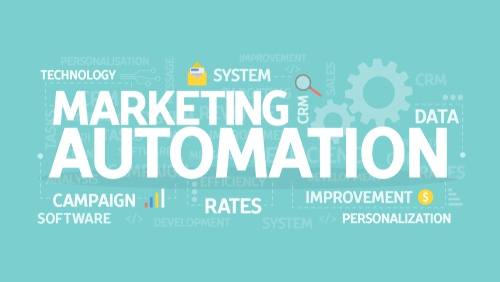
We set things up so that people who download a Guide or an eBook are AUTOMATICALLY sent a quick follow-up email a few days later from your sales team, offering them the next information resource.
And, because they have told us some info, (for example, in the case of the builder, that they are looking at building… say… a three bedroom home), then the email that’s sent will be customised to their needs.
The overall number of qualified leads that can be produced this way is staggering. And remember – all this is done automatically, so your sales team are not caught up writing and sending these emails!
In some cases, (allowing for about 15 minutes to look in the CRM, think about the prospect and write an email) we are saving our clients’ sales teams literally 15 to 20 hours a month of time!
And as you’ll know if you are in a sales management role, it isn’t just the h-o-u-r-s of time saved. The reality is, most sales people wouldn’t be sending those emails in the first place.
So your overall rate of follow up goes through the roof.
Want to know more about how to generate qualified leads?
There is so much more we could tell you about strategies to help you grow your business. We’re happy to have a chat about it at any time.
Our team has a great deal of Inbound Marketing expertise, and we can offer assistance wherever you are in Australia. We are just a phone call away on (07) 3891 3800.
You won’t get a ‘sales pitch’ when you call. Instead, we’ll talk about your challenges and your plans for growth, and look at how Inbound Marketing will help you to achieve your particular business growth goals.









